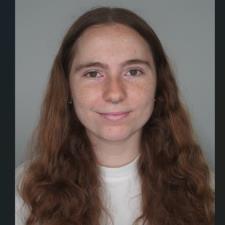
Bobosharif S. answered • 03/15/18
Tutor
4.4
(32)
Mathematics/Statistics Tutor
g(t)=(√t-1/√t)3 = t3/2 -3t1/2 + 3 /t-1/2-1/t-3/2=
=t3/2-2(t3/2)'+4(t3/2)''-(8/3)(t3/2)'''
If we denote f(t)=t3/2, then
If we denote f(t)=t3/2, then
g(t)=f(t)-2f'(t)+4f''(t)-(8/3)f'''(t).
Now we can use the addititive and "defivative" properties of Laplace transform:
L{f(n)(t)}=snL{f(t)}-sn-1f(0-)-sn-2f'(0-)-...-f(n-1)(0-).
L{g(t)}=L{f(t)}-2L{f'(t)}+4L{f''(t)}-(8/3)L{f'''(t)}=
=L{f(t)}-2[sL{f(t)}-f(0-)]+4[s2L{f(t)}-sf'(0-)-f(0-)]-
-(8/3)[s3L{f(t)}-s2f''(0-) -sf'(0-)-f(0-)]=
=(1-2s+4s2-(8/2)s3)L{f(t)}+[2f(0-)-4sf'(0-)-4f(0-)+(8/3)s2f'''(0-)-(8/3)sf''(0-)+(8/3)f(0-)]= (**)
L{f(t)}=L{t3/2}=∫0∞e-stt3/2dt=(3/4)√π * s-5/2.
f(0-)=f'(0-)=0, but f''(0-)=∞.
Now plug in all values in (**) and simplify. The rest I leave for you to do.




